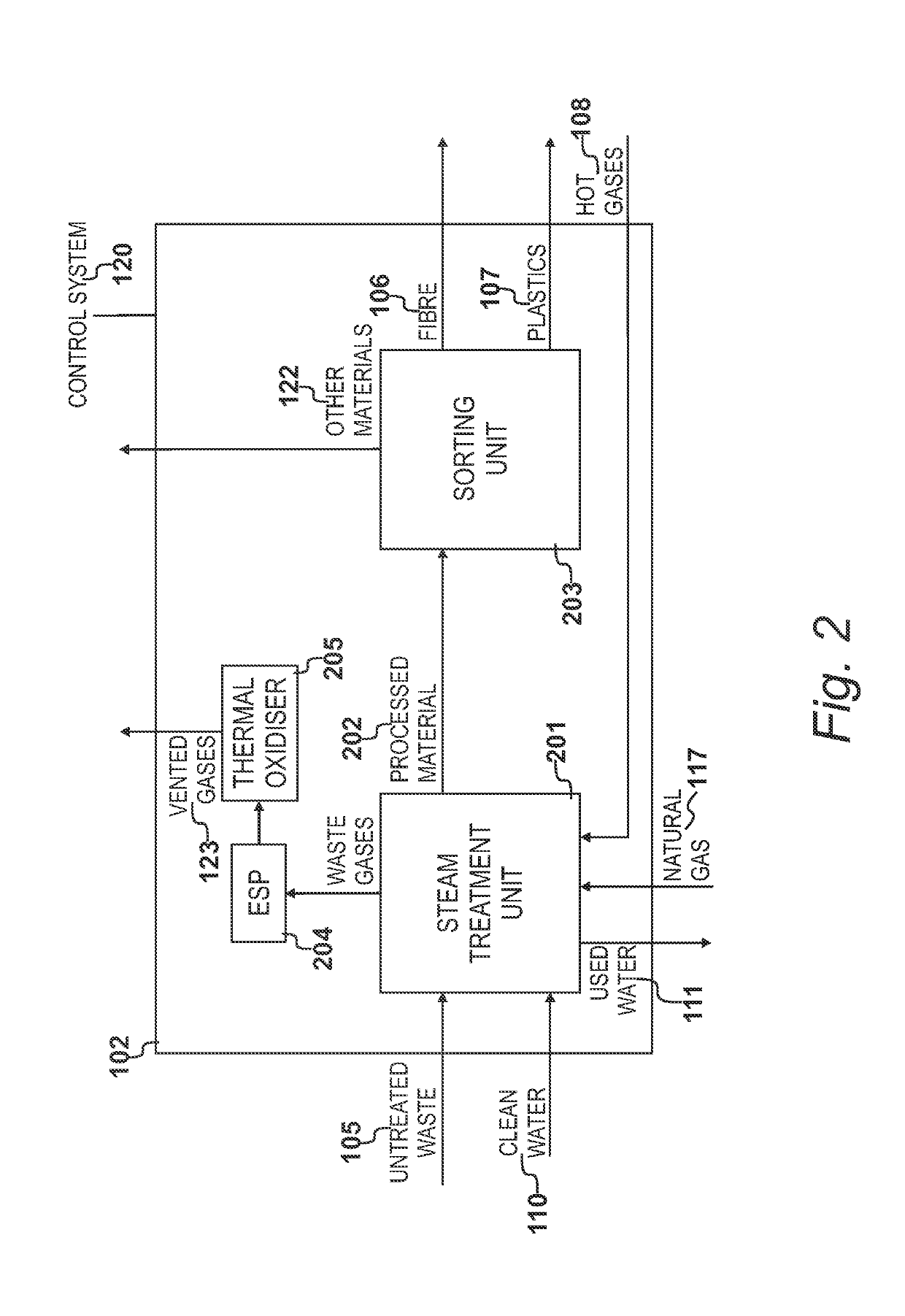Processing waste into carbon char
a technology of carbon char and carbon char, which is applied in the direction of special form destructive distillation, gasification process details, combustible gas production, etc., can solve the problems of incineration being widely seen as producing too many greenhouse gases, limited use of this fibre, and limited procedures for disposing of was
- Summary
- Abstract
- Description
- Claims
- Application Information
AI Technical Summary
Benefits of technology
Problems solved by technology
Method used
Image
Examples
Embodiment Construction
FIG. 1
[0015]FIG. 1 shows apparatus 101, which is an embodiment of the invention. It includes a recycling unit 102, an energy generation unit 103, a fibre processing unit 104, a control system 120, and an electricity supply 121.
[0016]Untreated waste 105 enters recycling unit 102 where it is processed and sorted into cellulose fibre 106, plastics 107, and other materials 122, which includes non-organic materials such as metals and bricks. The recycling unit needs a supply of clean water 110, and used water 111 is routed to drain 112. Cooled and cleaned gases 123 are vented to atmosphere via a chimney 124.
[0017]Plastics 107 are passed to energy generation unit 103, where they are used to generate heat for the recycling unit in the form of hot gases 108, and electricity 109. Electricity is routed to electricity supply 121, which supplies electricity to all the units and systems in apparatus 101 (the details of this are not shown). In the case that the electricity generated by energy gen...
PUM
| Property | Measurement | Unit |
|---|---|---|
| boiling point | aaaaa | aaaaa |
| temperature | aaaaa | aaaaa |
| temperature | aaaaa | aaaaa |
Abstract
Description
Claims
Application Information
 Login to View More
Login to View More - R&D
- Intellectual Property
- Life Sciences
- Materials
- Tech Scout
- Unparalleled Data Quality
- Higher Quality Content
- 60% Fewer Hallucinations
Browse by: Latest US Patents, China's latest patents, Technical Efficacy Thesaurus, Application Domain, Technology Topic, Popular Technical Reports.
© 2025 PatSnap. All rights reserved.Legal|Privacy policy|Modern Slavery Act Transparency Statement|Sitemap|About US| Contact US: help@patsnap.com



